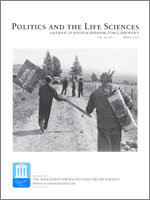This case study of the Australian Museum's Thylacine Cloning Project analyzes a frame dispute that emerged during public communication of a scientific project, which lasted from 1999 to 2005, and was premised on the idea of resurrecting an extinct species. In choosing the Tasmanian tiger—an iconic Australian marsupial officially declared extinct in 1986—the promoters of the cloning project ensured extensive media coverage. However, the popular and scientific attention generated by the idea of bringing back an extinct species challenged the Museum's efforts to frame the project in terms of scientific progress. The project repeatedly shifted from science to spectacle, as multiple stakeholders used the mass media to negotiate the scientific feasibility of trying to reverse extinction through the application of advanced biotechnology. The case study findings are relevant both to the emerging social issues surrounding the use of paleogenomics in wildlife conservation, and to the theoretical development of frame analysis as applied to scientific controversies.
ACCESS THE FULL ARTICLE
It is not available for individual sale.
This article is only available to subscribers.
It is not available for individual sale.
It is not available for individual sale.

Politics and the Life Sciences
Vol. 29 • No. 1
March 2010
Vol. 29 • No. 1
March 2010
ancient DNA
conservation genetics
extinction
frame analysis
paleogenomics
Tasmanian tiger
Thylacine Cloning Project




